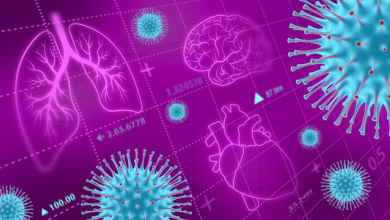Search results
Pulmonary Hypertension
Author(s):
Brendan P Madden
Added:
3 years ago
Article
Author(s):
Isla S Mackenzie
,
Thomas M MacDonald
Added:
3 years ago
Hypertension becomes more common with increasing age. As we gradually move towards having a higher proportion of elderly people in the population, greater numbers of octogenarians are being treated for hypertension. In this article we describe the main features of hypertension in the elderly and describe some of the particular issues that affect elderly patients. We also discuss the results of…
View more
Author(s):
Cristina Sierra
,
Antonio Coca
Added:
3 years ago
Hypertension Treatment
The aim of antihypertensive treatment is to reduce the cardiovascular morbidity and mortality associated with high blood pressure (BP) levels by measures aimed at reducing BP levels and minimising the impact of possible associated risk factors or co-morbidities.1–5 This therapeutic goal requires previous cardiovascular risk stratification to assess the global risk of…
View more
Author(s):
Jagmeet P Singh
Added:
3 years ago
Cardiac resynchronisation therapy (CRT) has achieved widespread approval as a safe and efficient therapeutic strategy for medically refractory congestive heart failure (CHF). The standard indications for CRT include patients with advanced heart failure and evidence of systolic dysfunction (ejection fraction [EF] ≤35%), conduction tissue disease (QRS duration ≥120ms) and marked cardiac symptoms …
View more
Author(s):
Konstantinos N Aronis
,
Brittany Edgar
,
Wendy Lin
,
et al
Added:
3 years ago
Atrial fibrillation (AF) requires complex management to prevent adverse outcomes. To succeed with AF, patients need to learn specialised medical terminology and the self-care skills and activation to interpret and report symptoms. AF care involves long-term adherence to medications with deleterious side-effects, such as antiarrhythmics and anticoagulants. The patient experience of AF is further…
View more
Author(s):
Antoni Martínez-Rubio
,
Soledad Ascoeta
,
Fadwa Taibi
,
et al
Added:
3 years ago
In the last months of 2019 and the beginning of 2020, a novel disease appeared, caused by severe acute respiratory syndrome coronavirus 2 (SARS-CoV-2), a very contagious virus, which causes coronavirus disease 2019 (COVID-19). The clinical manifestations of this virus in humans vary widely from asymptomatic to severe, with diverse symptomatology and even death. The substantial transmission from…
View more
Author(s):
Natalie Arnold
,
Katharina Lechner
,
Christoph Waldeyer
,
et al
Added:
2 years ago
Author(s):
Giacinta Guarini
,
Alda Huqi
,
Doralisa Morrone
,
et al
Added:
3 years ago
Although cardiovascular mortality has declined progressively in developed countries, ischaemic heart disease (IHD) and chronic stable angina cause a worse prognosis and poor quality of life and can dramatically increase healthcare costs.1–4 Traditionally, chronic stable angina has been interpreted as reversible episodes of myocardial ischaemia due to the presence of coronary artery disease…
View more
Author(s):
Sivabaskari Pasupathy
,
Rosanna Tavella
,
Simon McRae
,
et al
Added:
3 years ago
Early coronary angiography performed during acute MI (AMI) identifies an occluded vessel in most patients with ST elevation MI (STEMI)1 and less frequently in those with non-STEMI;2 however, ≥90 % of patients with AMI have evidence of obstructive coronary artery disease.3 For these patients with overt coronary artery disease (CAD), the benefits of reperfusion strategies and cardioprotective…
View more
Author(s):
Elías Martínez Rey-Rañal
,
Alberto Cordero
Added:
1 year ago














